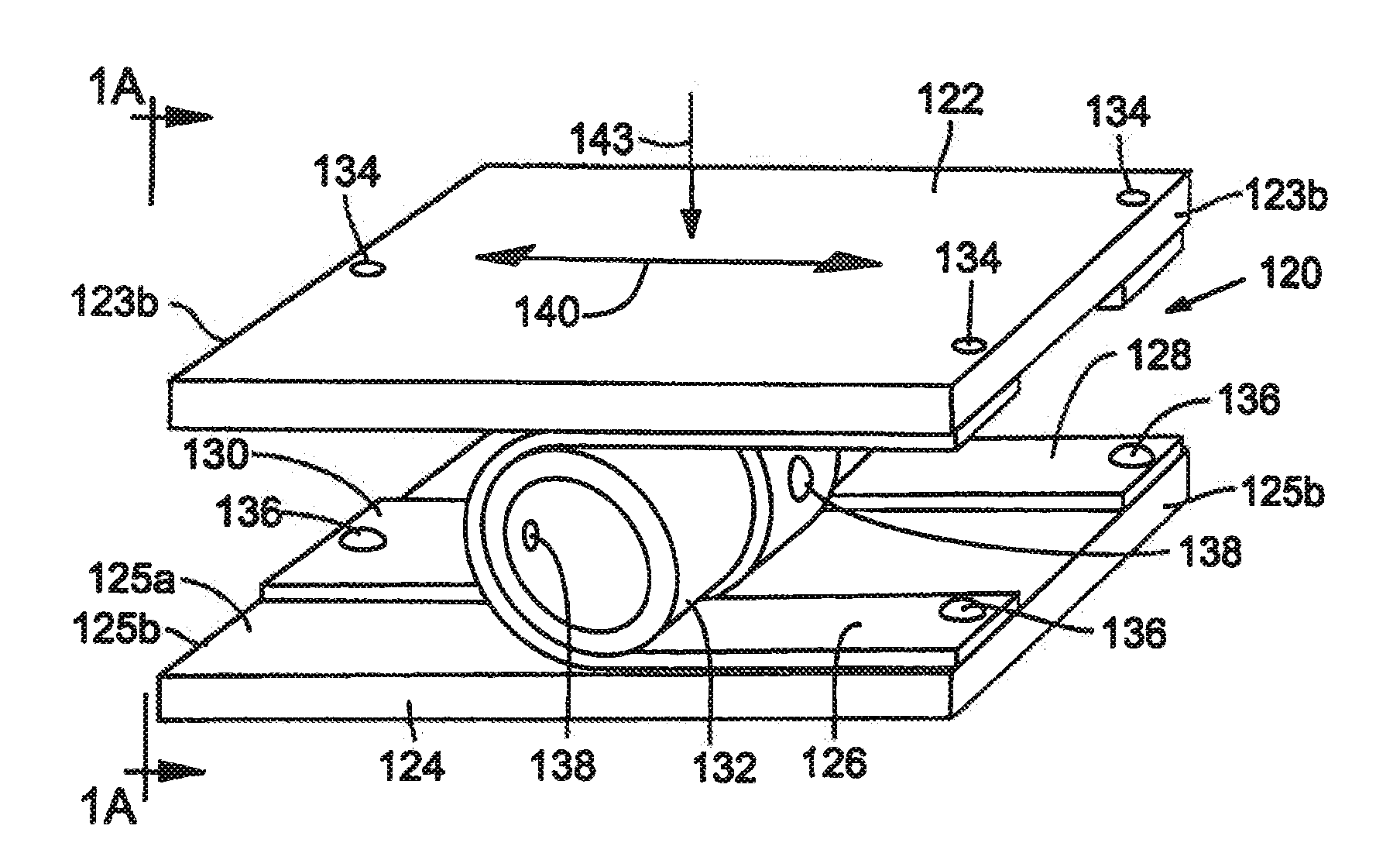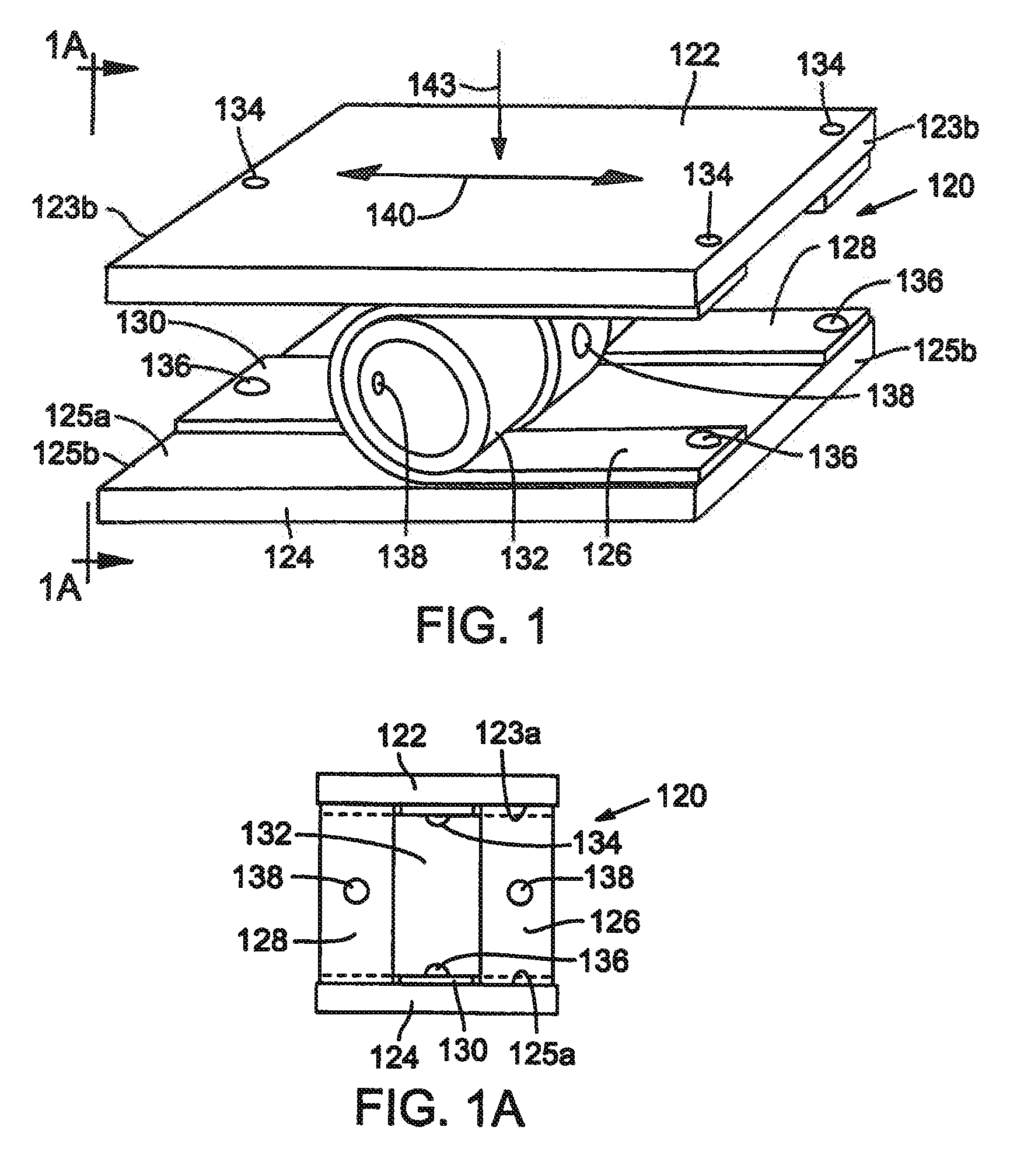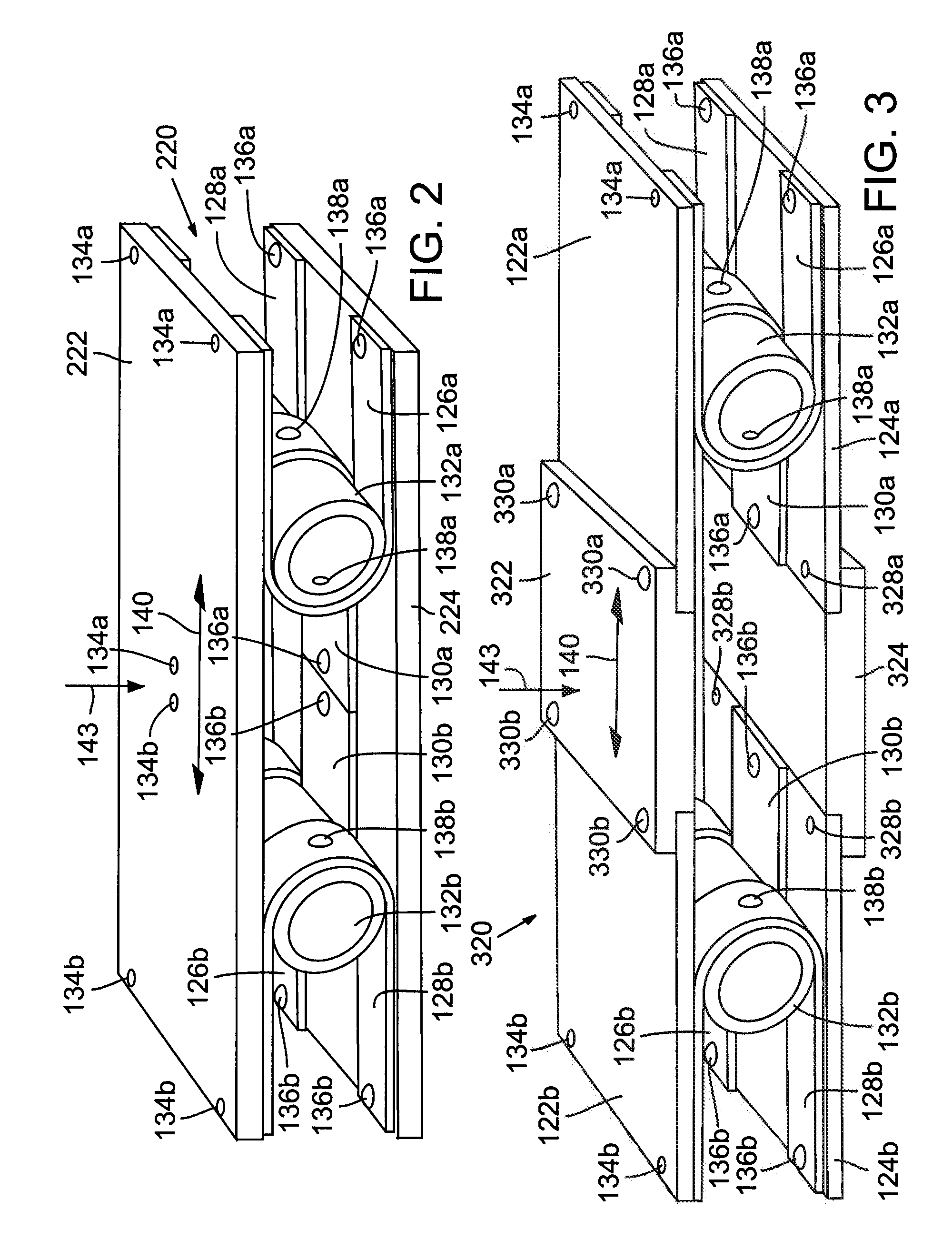Linear roller bearing assembly and sub-assembly and reciprocating machinery incorporating the same
a technology of roller bearings and components, which is applied in the direction of bearing units, rigid supports of bearings, machines/engines, etc., can solve the problems of reducing the life and performance of machines, reducing performance and efficiency, and commonly used spiral flexure bearings, so as to increase the carnot efficiency of a stirling engine power module and high thermodynamic engine efficiency and power density.
- Summary
- Abstract
- Description
- Claims
- Application Information
AI Technical Summary
Benefits of technology
Problems solved by technology
Method used
Image
Examples
first embodiment
[0056]FIG. 1 is a perspective view of a roller bearing sub-assembly according to the invention. FIG. 1A is an end view of the roller bearing sub-assembly shown in FIG. 1, taken along line 1A-1A of FIG. 1.
[0057]Referring to FIGS. 1 and 1A, a roller bearing sub-assembly 120 includes mounting portions or rails (e.g., first mounting portion 122 and second mounting portion 124), straps (e.g., first peripheral strap 126, second peripheral strap 128 and central strap 130), a roller (e.g., roller 132), and attachments (e.g., first mounting portion attachments 134, second mounting portion attachments 136 and roller attachments 138).
[0058]The first mounting portion 122 includes a strap-supporting surface 123a and side surfaces 123b on opposite edges of the strap-supporting surface 123a. Likewise, the second mounting portion 124 includes a strap-supporting surface 125a and side surfaces 125b on opposite edges of the strap-supporting surface 125a. The strap-supporting surfaces 123a and 125a con...
second embodiment
[0072]FIG. 2 is a perspective view of a roller bearing sub-assembly according to the invention.
[0073]Referring to FIG. 2, a roller bearing sub-assembly 220 according to a second embodiment includes mounting portions or rails (e.g., first mounting portion 222 and second mounting portion 224), straps (e.g., first peripheral straps 126a and 126b, second peripheral straps 128a and 128b and central straps 130a and 130b), rollers (e.g., rollers 132a and 132b), and attachments (e.g., first mounting portion attachments 134a and 134b, second mounting portion attachments 136a and 136b and roller attachments 138a and 138b).
[0074]The mounting portions, straps, and attachments may all be provided as exemplarily described with respect to the roller bearing sub-assembly 120 according to the first embodiment. However, in the roller bearing sub-assembly 220, each of the first peripheral straps 126a and 126b, second peripheral straps 128a and 128b and central straps 130a and 130b, are secured to the ...
third embodiment
[0078]FIG. 3 is a perspective view of a roller bearing sub-assembly according to the invention.
[0079]Referring to FIG. 3, a roller bearing sub-assembly 320 according to a third embodiment includes mounting portions or rails (e.g., first mounting portions 122a and 122b and second mounting portions 124a and 124b), straps (e.g., first peripheral straps 126a and 126b, second peripheral straps 128a and 128b and central straps 130a and 130b), rollers (e.g., rollers 132a and 132b), attachments (e.g., first mounting portion attachments 134a and 134b, second mounting portion attachments 136a and 136b, roller attachments 138a and 138b, first spacer attachments 330a and 330b and second spacer attachments 328a and 328b) and mounting portion spacers or rail spacers (e.g., first mounting portion spacer 322 and second mounting portion spacer 324). The first spacer attachments 330a and 330b and second spacer attachments 328a and 328b may be provided as attachments such as those exemplarily describe...
PUM
| Property | Measurement | Unit |
|---|---|---|
| Angle | aaaaa | aaaaa |
| Angle | aaaaa | aaaaa |
| Temperature | aaaaa | aaaaa |
Abstract
Description
Claims
Application Information
 Login to View More
Login to View More - R&D
- Intellectual Property
- Life Sciences
- Materials
- Tech Scout
- Unparalleled Data Quality
- Higher Quality Content
- 60% Fewer Hallucinations
Browse by: Latest US Patents, China's latest patents, Technical Efficacy Thesaurus, Application Domain, Technology Topic, Popular Technical Reports.
© 2025 PatSnap. All rights reserved.Legal|Privacy policy|Modern Slavery Act Transparency Statement|Sitemap|About US| Contact US: help@patsnap.com



